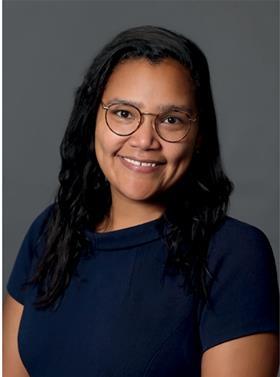The legal industry has increasingly focused on removing barriers faced by minority communities. While this has helped improve diversity and inclusion (D&I), law firms must not forget the importance of intersectionality. To mark LGBT+ History Month, the Law Society’s LGBT+ Lawyers Division Committee is focusing on intersectional identities.

The problem
Identities such as race, disability, sexual orientation and gender do not exist in a vacuum. Often people are members of more than one minority group and these identities overlap. The term ‘intersectionality’ is used to describe this overlap.
Employees from intersectional backgrounds often face unique types of discrimination, different to those faced by members of only one minority group.
Lower pay
According to an Equality and Human Rights Commission report, where ethnic pay gaps exist, the gap becomes larger when factoring in disability. In the UK, disabled Bangladeshi and Black African men experience a pay gap of 56% and 34% respectively, compared with white British non-disabled men.
According to recent data published by the National Partnership for Women & Families, white women in the US earn 79 cents on the dollar compared with white men. African American and Hispanic women in the US earn 64 cents and 57 cents on the dollar respectively, compared with white men.
Sexual harassment
A Trades Union Congress report found that the UK LGBT+ community experience greater levels of sexual harassment and assault at work. This increases significantly when considered alongside ethnicity. The report found that 54% of lesbian, bisexual, and transgender Black and minority ethnic women reported unwanted touching at work, compared with 34% of white women. LGBT+ women with disabilities reported higher levels of sexual harassment at work than both men with disabilities and non-disabled men and women.
Fairleigh Dickinson University analysed US workplace discrimination data between 1997 and 2016. It found that Black women were significantly more likely to be subjected to sexual harassment at work than their white peers. The authors suggested that the shift of sexual harassment from white to African American women may suggest that sexual harassers consciously target the most vulnerable women in the workplace.
According to Global Life Partners data, the average cisgender white man in the US lives to around 77 and white cisgender women 81. A University of North Carolina School of Medicine report found that the average life expectancy of a Black transgender woman in the US is 35, primarily as a result of violence. While this statistic is not linked to workplace sexual harassment, it illustrates the significant impact of the discrimination faced by some intersectional communities.
Attrition rates
Employees who face discrimination linked to intersectionality are more likely to leave the workplace, according to a Catalyst report.
It found that Black and minority-ethnic people who experienced microaggressions in the workplace were more likely to resign than their white peers: 35% of Black professionals intended to quit within two years, compared with 27% of white professionals, with rates rising to 36% for Black women. According to a Stonewall report, 12% of Black and minority-ethnic LGBT+ employees have been fired in the past year due to being LGBT+, compared with 4% of white LGBT+ employees.
To mark last year’s LGBT+ History Month, the Law Society’s LGBT+ Lawyers Division Committee published its Pride in the Law report, which surveyed the profession about experiences of being LGBT+ at work. Many respondents identified microaggressions as a key issue, particularly when combined with an intersectional identity, such as being gay and a woman.
Solution
1. Equity – law firm D&I programmes should focus on equity rather than equality. Equality in the workplace means ensuring that everyone is treated the same. Equity acknowledges that for everyone to have the same opportunity to succeed, people may require different support. For example, a diverse candidate might be more nervous in an interview if the interviewers are from non-diverse backgrounds. If that candidate were treated equally, they would receive the same preparation materials as the other non-diverse candidates, which could put them at a disadvantage. If the candidate were to be treated equitably, the firm could arrange for them to speak with other diverse employees at the firm before the interview.
2. Smart targets – D&I targets must acknowledge a range of minority identities. For example, it is not necessarily diverse to have a team with a good gender balance if all of the team members are from the same ethnic background. To encourage teams to value intersectional diversity, firms should consider taking account of a more nuanced concept of D&I within their teams.
3. Community allyship – workplace D&I initiatives often focus on allyship from overrepresented social groups. While this is important, it is also important for minority communities to be allies to each other. This includes each of the identities under the LGBT+ umbrella being allies to one other, but also extends to minorities generally. Within firms, minority networks should be encouraged to support each other and partner on initiatives whenever possible. These groups will have more influence working together to achieve their collective goals.
The legal profession should be the paragon of equity and justice. We have a responsibility to ensure that we are championing D&I at all levels of the profession. To mark LGBT+ History Month, I would urge firms to consider refreshing their D&I programmes to ensure that they address the needs of intersectional employees.
Netanya Clixby is a managing associate at Sidley Austin and sits on the Law Society’s LGBT+ Lawyers Division Committee. The views expressed in this article are exclusively those of the author and do not necessarily reflect those of Sidley Austin and its partners






























